Indoor palm trees are a great way to bring a touch of tropical paradise into your home. With their lush, green foliage and easy-care requirements, palm trees can be a great addition to any indoor space. In this article, we’ll explore how to grow indoor palm trees, from selecting the right species to providing proper care and maintenance.

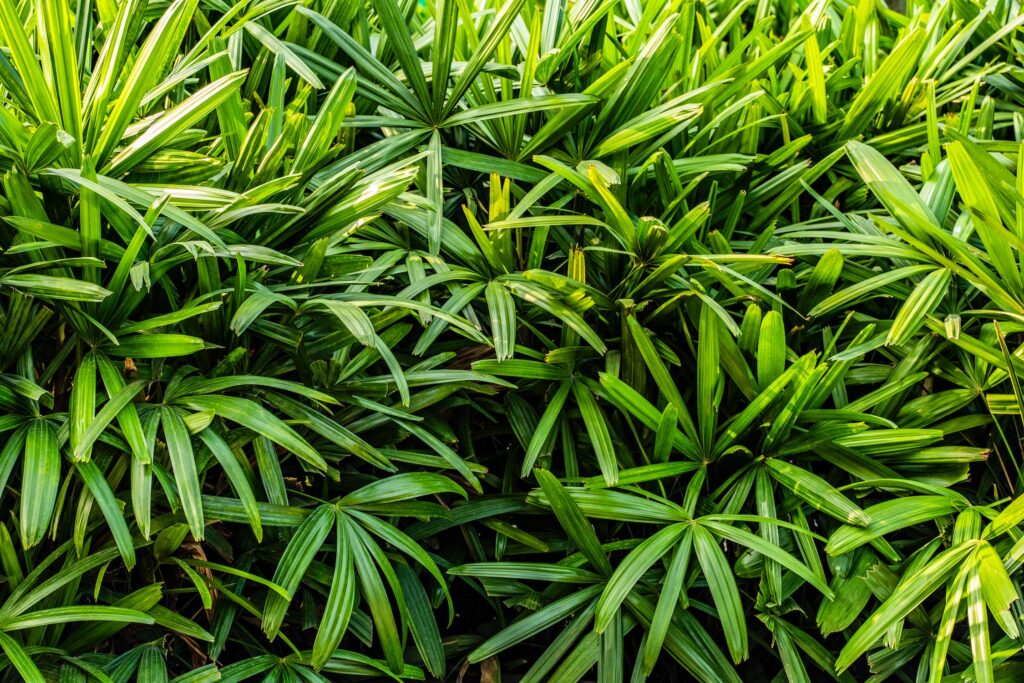
Table of Contents
Choosing the Right Species
When it comes to growing indoor palm trees, the first step is to select the right species. There are many different types of palm trees, each with its own unique characteristics and requirements. Some popular indoor palm species include:
- Areca Palm (Dypsis lutescens): This is one of the most popular indoor palm species, thanks to its lush, feathery fronds and easy care requirements. Areca palms prefer bright, indirect light and moderate watering.
- Kentia Palm (Howea forsteriana): Kentia palms are another popular choice for indoor palm trees. They have a classic tropical look, with long, graceful fronds that arch gracefully over time. Kentia palms prefer moderate to bright light and regular watering.
- Parlor Palm (Chamaedorea elegans): If you’re looking for a smaller palm tree, the parlor palm is a great choice. It has delicate fronds and a compact size that make it perfect for smaller spaces. Parlor palms prefer low to moderate light and infrequent watering.
- Ponytail Palm (Beaucarnea recurvata): Despite its name, the ponytail palm is not actually a palm tree. It is a succulent, which means it requires very little water and can thrive in bright, indirect light. Ponytail palms have a unique look, with a large, bulbous base and long, thin fronds that resemble ponytails.
- Lady Palm (Rhapis excelsa): Lady palms are another popular indoor palm species. They have a distinctive fan shape, with multiple fronds that grow from a central base. Lady palms prefer moderate to bright light and regular watering.
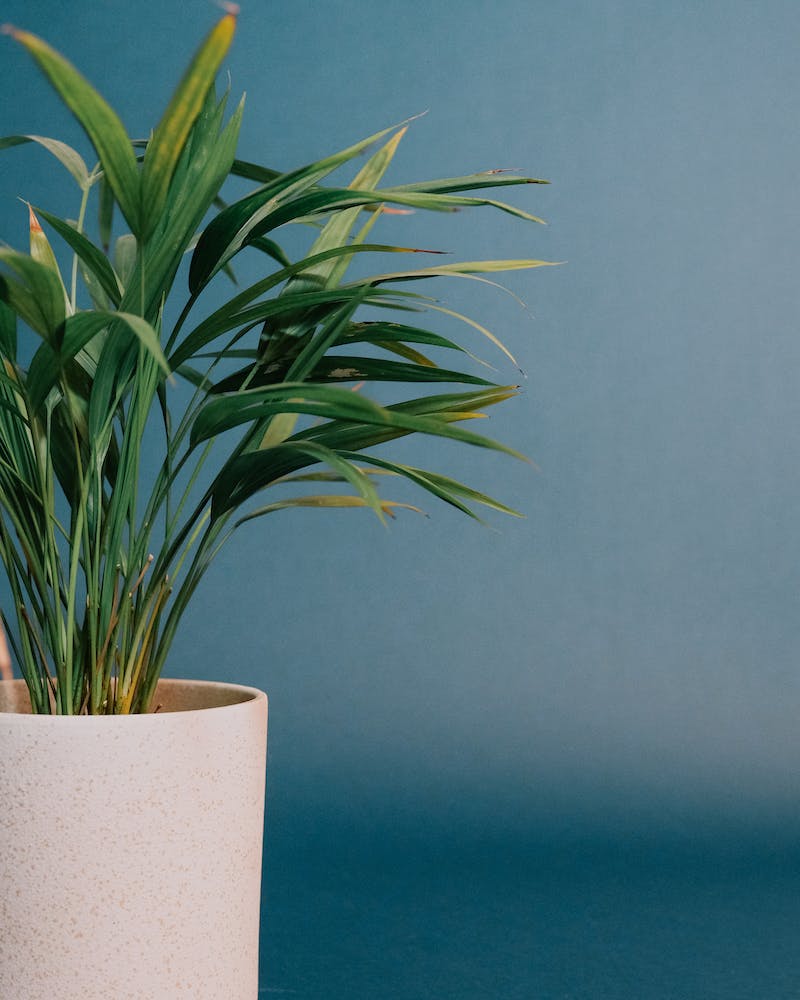
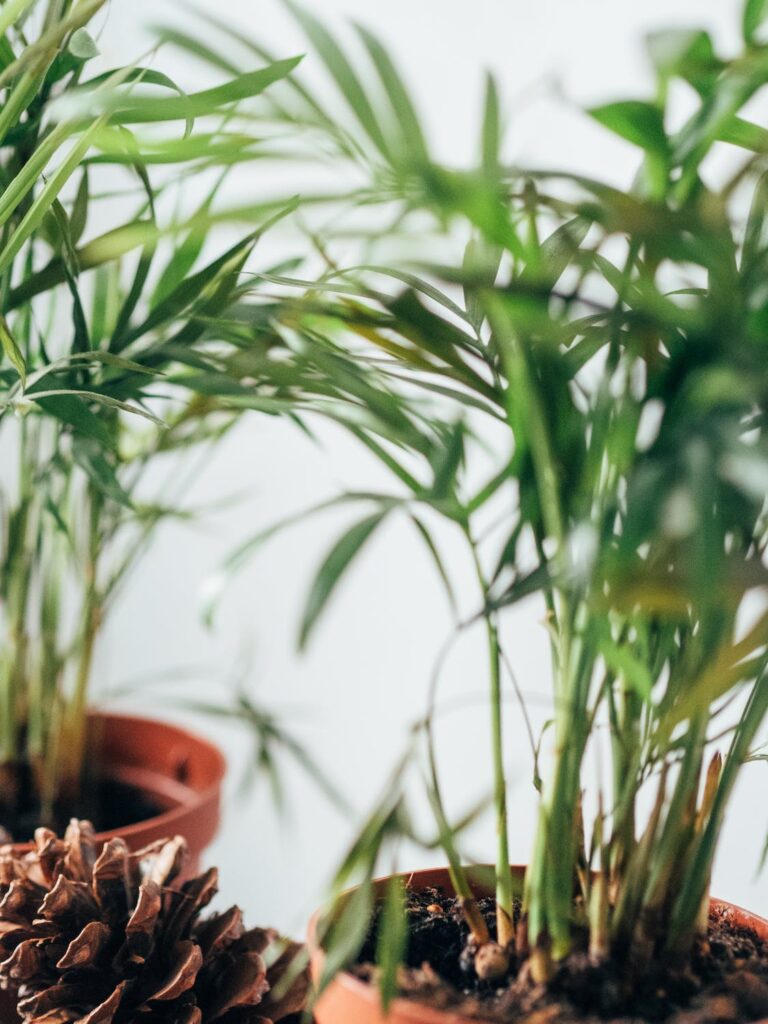
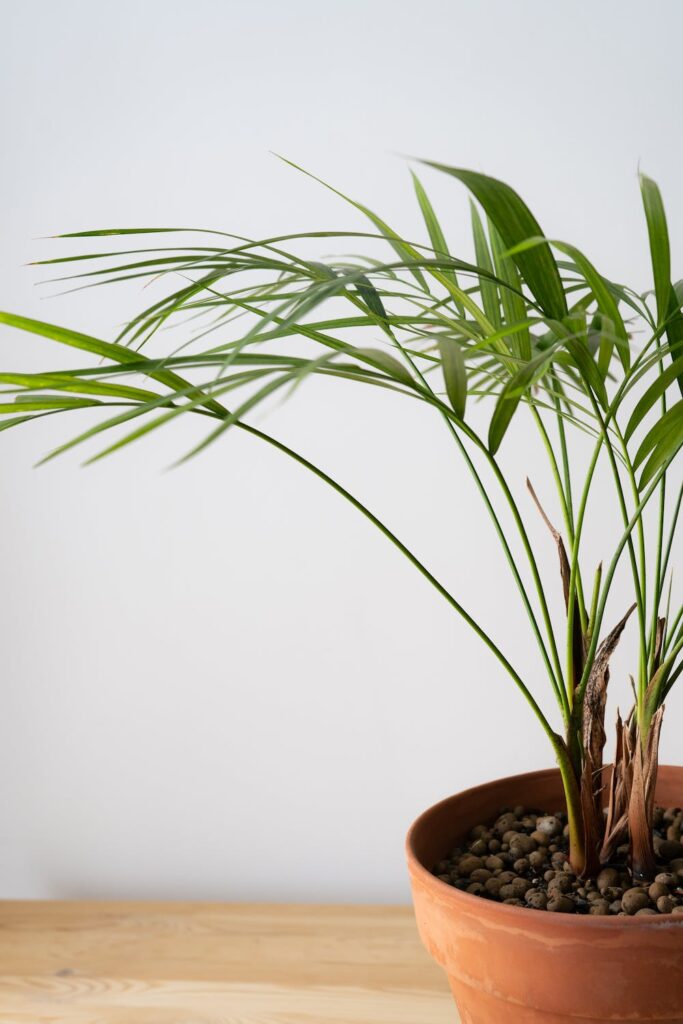
There are many other indoor palm species to choose from, each with its own unique look and requirements. Before selecting a species, consider the amount of available space, the amount of light your space receives, and your ability to provide regular care and maintenance.
Providing the Right Growing Conditions
Once you’ve selected the right species of indoor palm tree, it’s important to provide the right growing conditions. Here are some key factors to consider:
Light requirements
Most indoor palm trees prefer bright, indirect light. This means placing them near a window that receives plenty of natural light, but not direct sunlight. Direct sunlight can scorch the leaves of your palm tree, so it’s important to provide shade or a sheer curtain if your window receives too much sun. If you don’t have access to natural light, you can also use grow lights to provide artificial light for your palm tree. LED grow lights are a popular choice for indoor plants, as they are energy efficient and can be programmed to provide the right spectrum of light for your plant’s needs.
Temperature and humidity requirements
Most indoor palm trees prefer temperatures between 65 and 80 degrees Fahrenheit (15 and 26 degrees Celsius). They can tolerate slightly cooler temperatures at night, but should not be exposed to temperatures below 55 degrees Fahrenheit (12 degrees Celsius). Avoid placing your palm tree near cold drafts or air conditioning vents, as this can cause stress to the plant and lead to leaf damage.
Providing the right growing conditions is essential for the health and vitality of indoor palm trees. Most species prefer bright, indirect light, temperatures between 65 and 80 degrees Fahrenheit (15 and 26 degrees Celsius) and humidity levels between 50% and 60%. To increase humidity levels, you can use a humidifier or place a tray of pebbles and water beneath the plant. Regular fertilisation and pruning can also help keep your indoor palm tree healthy and thriving.
Watering requirements
Watering indoor palm trees is crucial for their growth and health. Most species prefer moderate watering, meaning that the soil should be moist but not waterlogged. Overwatering can lead to root rot and other problems. It is therefore important to allow the soil to dry out slightly between waterings. The frequency of watering is dependent on the palm species, size of the pot, and temperature and humidity levels. Generally, indoor palm trees should be watered once a week, also check the soil moisture level before watering to avoid over or underwatering. It’s also important to use a well-draining soil mix and a pot with drainage holes to ensure proper water drainage.
Soil and fertilisation requirements
Soil and fertilising are important factors for the growth and health of indoor palm trees. A well-draining soil mix that retains moisture but also allows for proper drainage is ideal. It’s important to use a potting mix that is specifically designed for palm trees, as they have unique nutrient requirements. Fertilising is also important, as indoor palm trees require regular feeding to maintain their health and vitality. A balanced, water-soluble fertiliser should be used every two to four weeks during the growing season. It’s important to follow the manufacturer’s instructions and avoid over-fertilising, as this can lead to leaf burn and other problems. Removing dead or yellowing leaves can also help promote healthy growth and maintain the plant’s appearance.
Pruning
Regular pruning can help remove dead or yellowing leaves, promote new growth, and maintain the plant’s shape and size. When pruning, it’s important to use clean, sharp tools and avoid cutting too close to the trunk. Remove fronds that are completely dead, as partially yellowing or browning fronds may still be providing nutrients to the plant. Removing too many fronds at once can also stress the plant, so it’s important to prune gradually over time. It’s also important to avoid cutting the crown shaft, as this can damage the plant and lead to infection.
Repotting
Repotting indoor palm trees is important for their growth and health. It’s recommended to repot your palm tree every two to three years, or when the roots have outgrown the pot. Use a well-draining soil mix and a pot that is one size larger than the current pot. Carefully loosen the root ball and remove any dead or damaged roots before placing the plant into the new pot. It’s important to avoid overwatering after repotting, as the plant may need time to adjust to its new environment. Along with repotting, you can also prune any dead or yellowing fronds and add fresh soil and fertiliser to promote healthy growth.
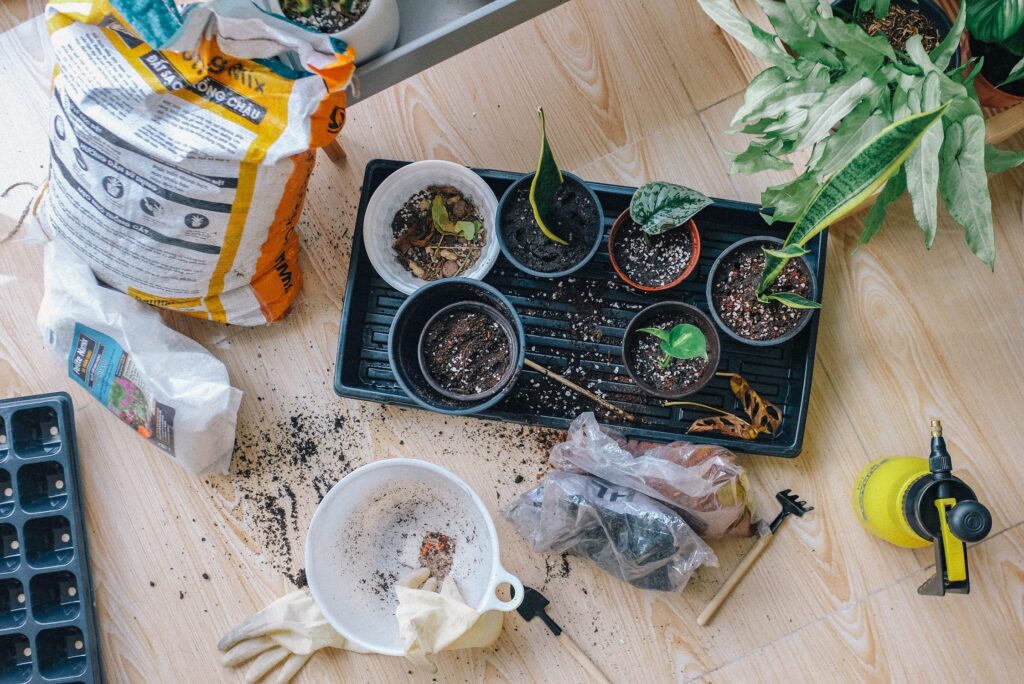
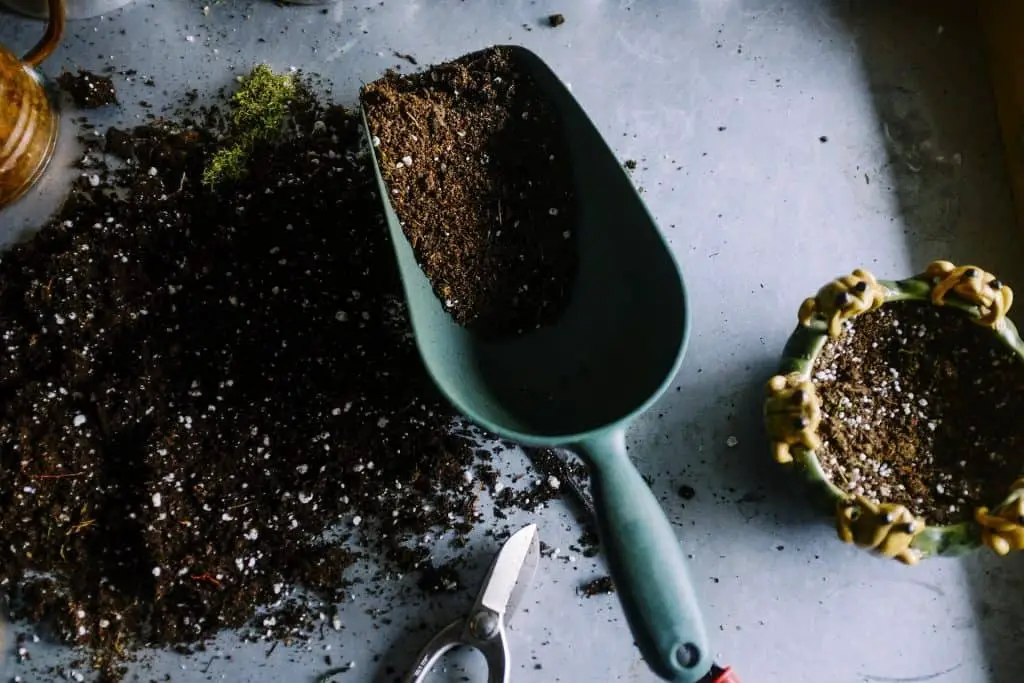
Pest control for indoor palm trees
Indoor palm trees can be susceptible to a range of pests, including spider mites, mealybugs, and scale insects. To control these pests, it’s important to regularly inspect the plant and treat any infestations as soon as possible. Use soft cloth or sponge to wipe away any visible pests, or an insecticidal soap or oil spray to control the infestation. Follow the manufacturer’s instructions and avoid overusing pesticides, as this can harm the plant and cause additional problems. Prevent pest infestations by regularly cleaning the plant and its surrounding area, avoiding overwatering, and maintaining a healthy growing environment.
Conclusion
Indoor palm trees can add a touch of tropical elegance to any home or office space, however provide them with the right growing conditions and care to ensure their health and longevity. From providing the proper lighting and humidity levels to regular watering and fertilising; there are several key factors to consider when growing indoor palm trees. Additionally, regular pruning, soil repotting, and pest control are essential for maintaining the plant’s health and appearance. With proper care, indoor palm trees can thrive and bring a sense of natural beauty to any indoor space.
